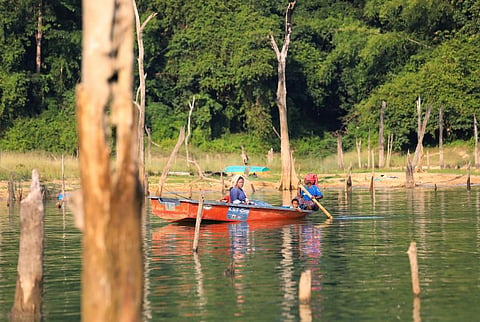Faces of protection: 30x30 goal impossible without indigenous participation
Parts of the Post-2020 Global Biodiversity Framework (GBF) remain controversial despite four years of preparation. One of these murky points is the target 3 of the GBF, which proposes that 30 per cent of land and sea on earth should be protected by 2030.
The target was scheduled to be addressed by working group 2 on the second day of 15th Conference of Parties (COP15) to the United Nations Convention on Biological Diversity (CBD) in Montreal, Canada.
The target was not discussed, but a report prepared by the executive secretary on the status of protected areas was noted by the working group. The report provides information on protected areas in different parts of the world.
The report could have been made richer and more informative by providing information on the qualitative aspects and effectiveness of the protected areas, representatives for Zimbabwe said, while speaking for the Africa Group.
“Unfortunately, most protected areas in the past were established in a non-participatory way, disrespecting the rights of Indigenous People and Local Communities (IPLC). This should be avoided in the future,” he said. “The reports should have looked at the qualitative aspects and not just expansion.”
The negotiators might have missed the evidence, but it does exist. There is more primate biodiversity on indigenous lands, a study published in the journal Science on August 10, 2022 said.
The researchers looked at primate diversity represented by 521 species distributed across 91 countries and analysed the significance of Indigenous Peoples’ lands in safeguarding primate biodiversity.
They found that indigenous peoples’ lands account for 30 per cent of the primate range and 71 per cent of primate species inhabit these lands. The researchers concluded that safeguarding indigenous peoples’ lands, languages, and cultures represents the greatest chance to prevent the extinction of the world’s primates.
The failure to include indigenous people in the conservation conversation has been pointed out to the negotiators and human rights advocates continued to reiterate it even during the meeting.
The intention behind the target seems to be just extending the area in numbers without looking at how these areas have been protected to date, said Souparna Lahiri, climate and biodiversity policy advisor of the Global Forest Coalition.
Lahiri was speaking at a press meeting by Global Justice Ecology Project, an organisation working for social, ecological & economic justice.
Africa, parts of Asia, South America, Central America and to some extent, even Australia and New Zealand, still have land under the control of IPLCs, indicated the report by the executive secretary on the status of protected areas. They would benefit from a target that ensures their inclusion.
The governance types reported in World Database on Protected Areas for protected areas regionally and globally. Source: CBD
There is a need to ensure that when protected areas are made, there is free and prior informed consent of the community, said Jennifer Corpuz, a representative of the International Indigenous Forum on Biodiversity at another press meeting organised by National Geographic Society and Campaign for Nature.
“Out of the 1/3 of the world stewarded by indigenous people, only 40 per cent is covered by protected areas. The remaining 60 per cent must be conserved as well. Why can’t we allow indigenous people’s territory to be governed by indigenous people and their ways,” she asked.
She said that the world would not be able to achieve 30X30 without indigenous people.
Indigenous people, however, are not part of the formal negotiations. The High Ambition Coalition for Nature and People, which first proposed the target of 30x30 in 2020, is supported by more than 100 countries. The views of the indigenous people would hopefully be taken to the negotiations through this coalition, Corpuz said.
Currently, the text of target 3 in the latest Post-2020 GBF released on December 5, 2022, still has multiple square brackets. It is unclear which way negotiations are going, but if negotiators share the same concerns as the activists, the situation is indeed bad.
Accepting the target without ensuring that the rights of the indigenous people are upheld should not be an option. Ways in which communities can be supported in their conservation work needs more discussion, but it would require funds, which are already in short supply.


